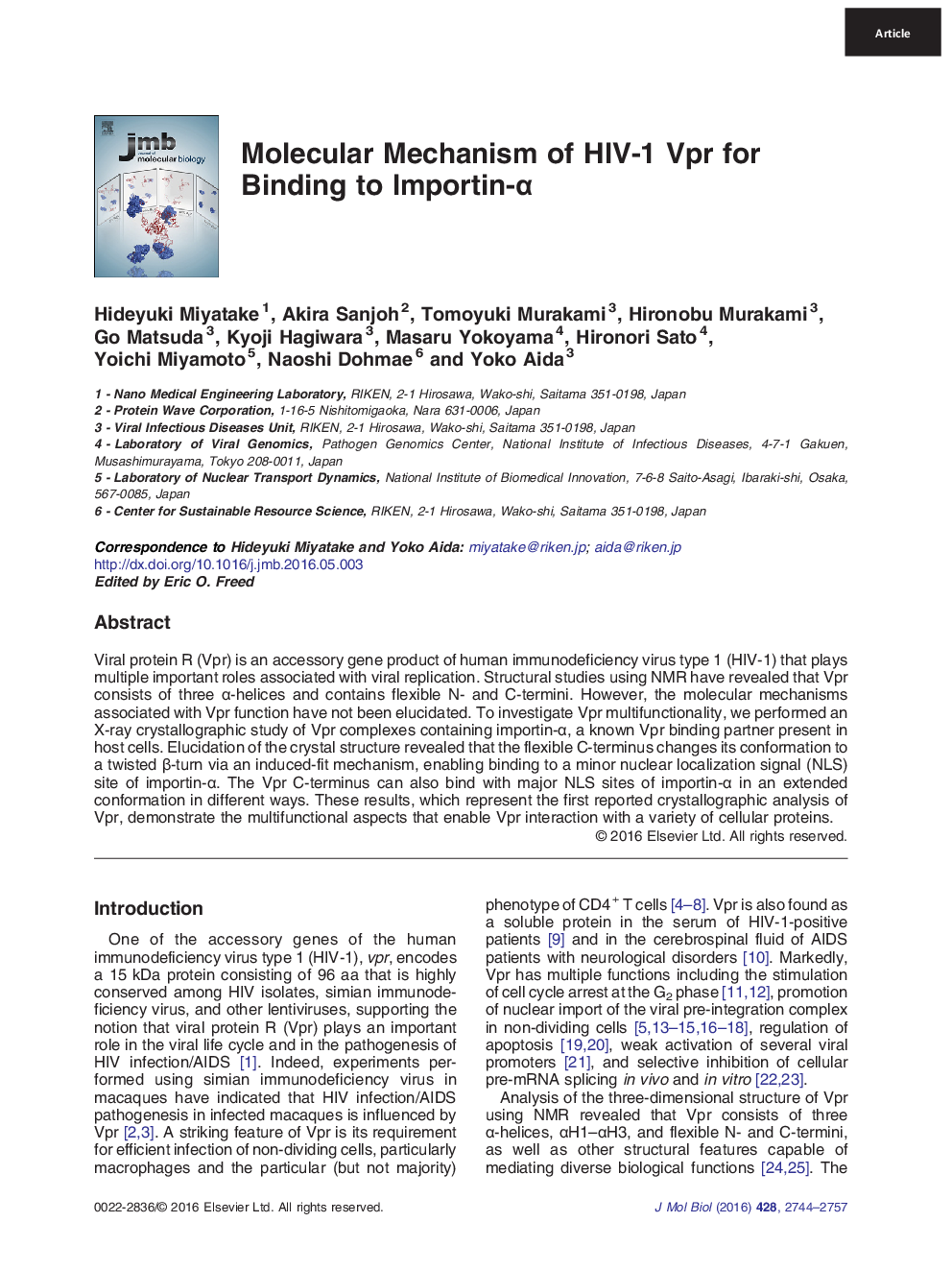| Article ID | Journal | Published Year | Pages | File Type |
|---|---|---|---|---|
| 2184306 | Journal of Molecular Biology | 2016 | 14 Pages |
•Crystal complex structure of HIV-1 Vpr C-terminal and importin-α•Vpr C-terminal loop makes a twisted β-turn upon binding to importin-α, inducing homodimerization of importin-α.•The twisted β-turn mimics a canonical NLS-binding motif for the minor NLS-binding site of importin-α.•The major NLS-binding site free from the Vpr binding passively serves as the canonical NLS-binding site during pre-integration complex nuclear import.
Viral protein R (Vpr) is an accessory gene product of human immunodeficiency virus type 1 (HIV-1) that plays multiple important roles associated with viral replication. Structural studies using NMR have revealed that Vpr consists of three α-helices and contains flexible N- and C-termini. However, the molecular mechanisms associated with Vpr function have not been elucidated. To investigate Vpr multifunctionality, we performed an X-ray crystallographic study of Vpr complexes containing importin-α, a known Vpr binding partner present in host cells. Elucidation of the crystal structure revealed that the flexible C-terminus changes its conformation to a twisted β-turn via an induced-fit mechanism, enabling binding to a minor nuclear localization signal (NLS) site of importin-α. The Vpr C-terminus can also bind with major NLS sites of importin-α in an extended conformation in different ways. These results, which represent the first reported crystallographic analysis of Vpr, demonstrate the multifunctional aspects that enable Vpr interaction with a variety of cellular proteins.
Graphical AbstractFigure optionsDownload full-size imageDownload high-quality image (186 K)Download as PowerPoint slide
